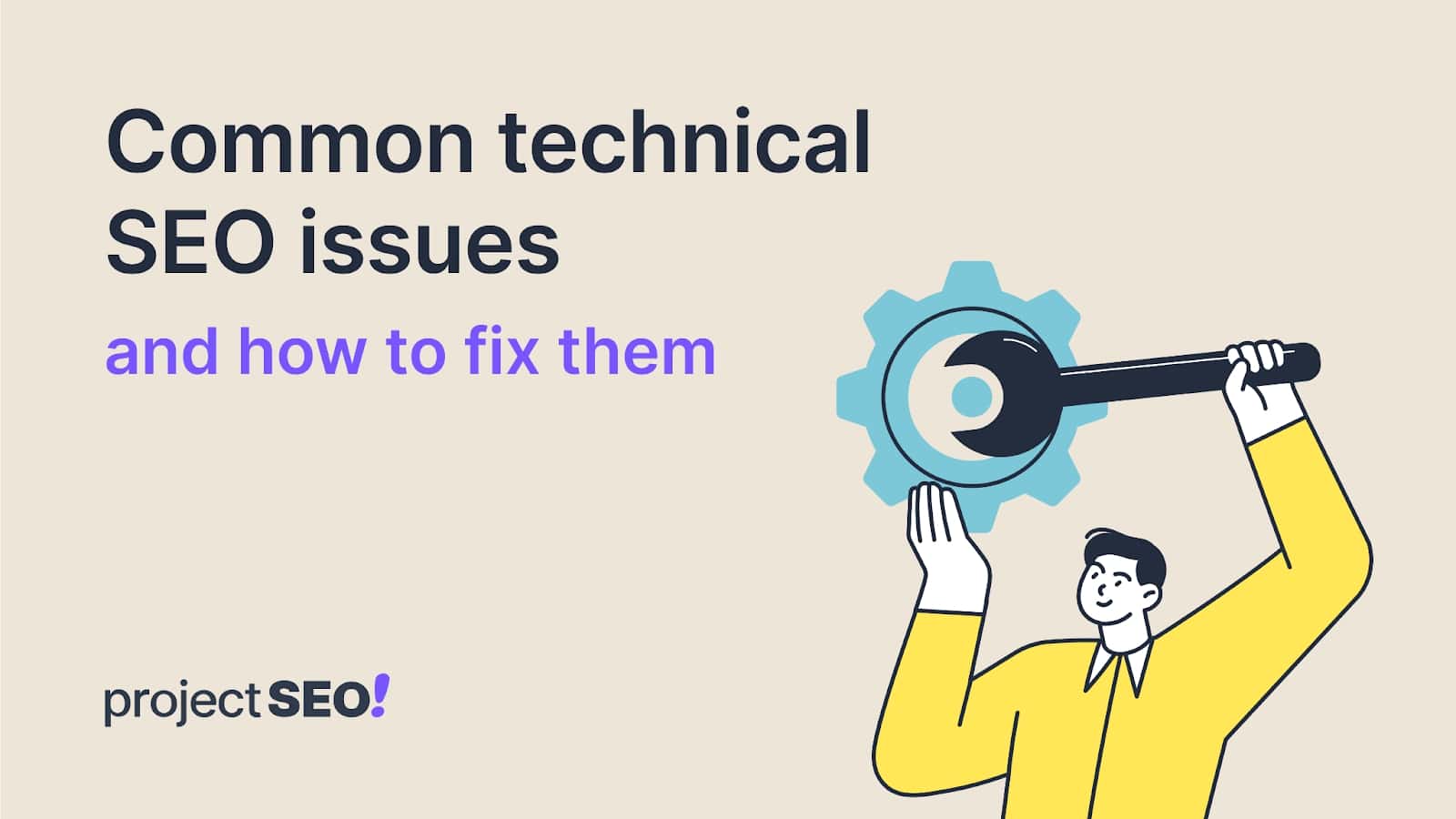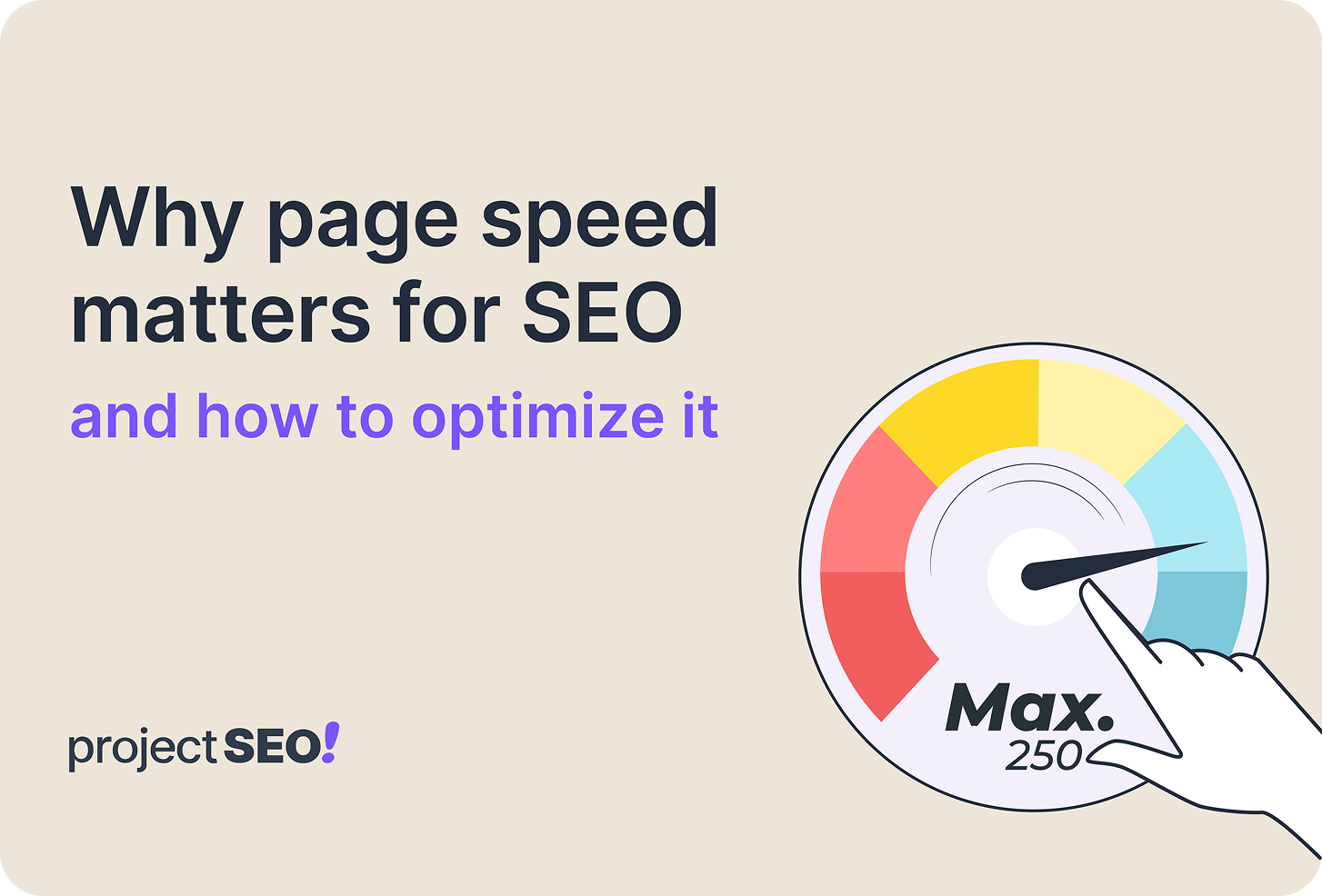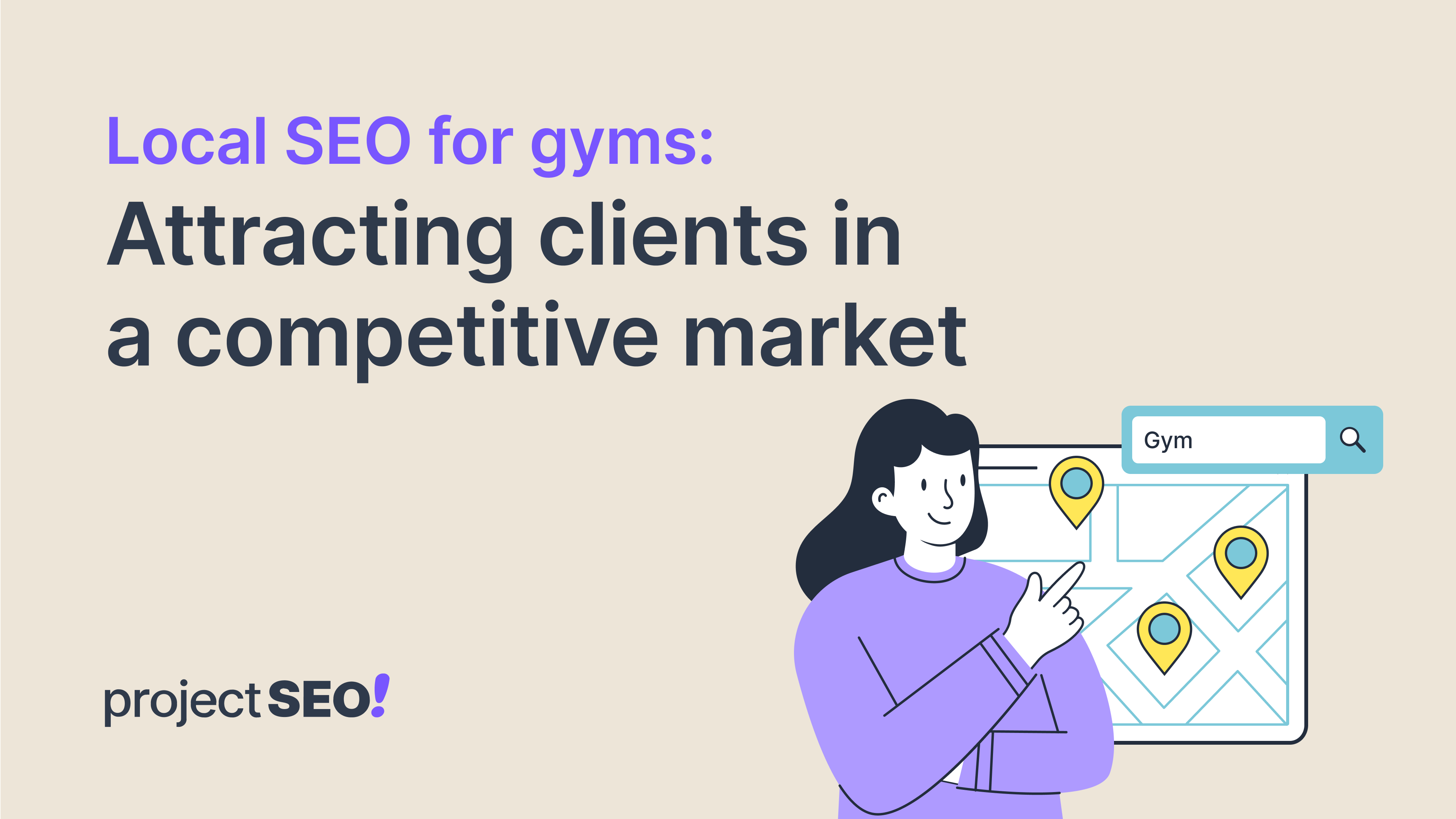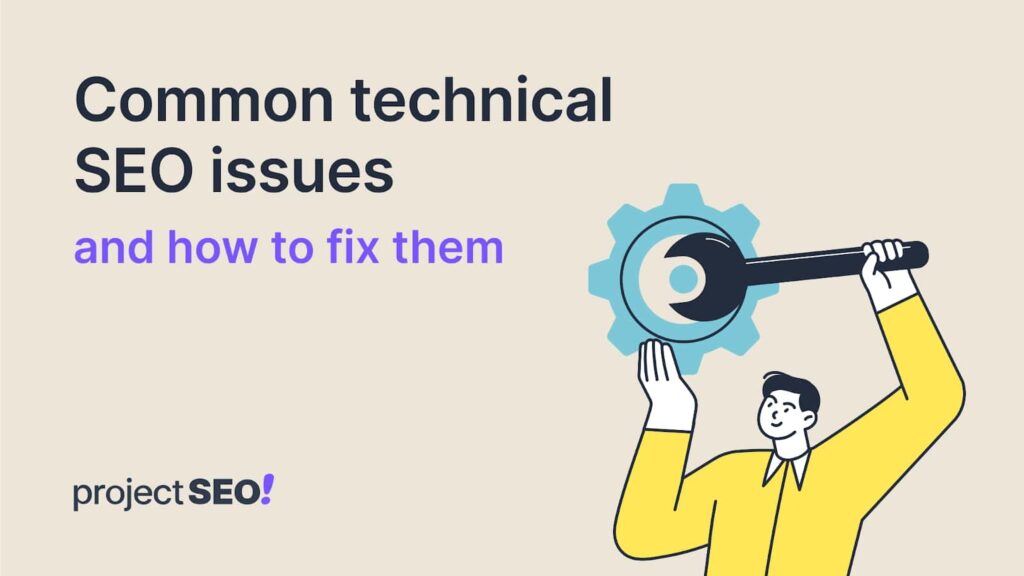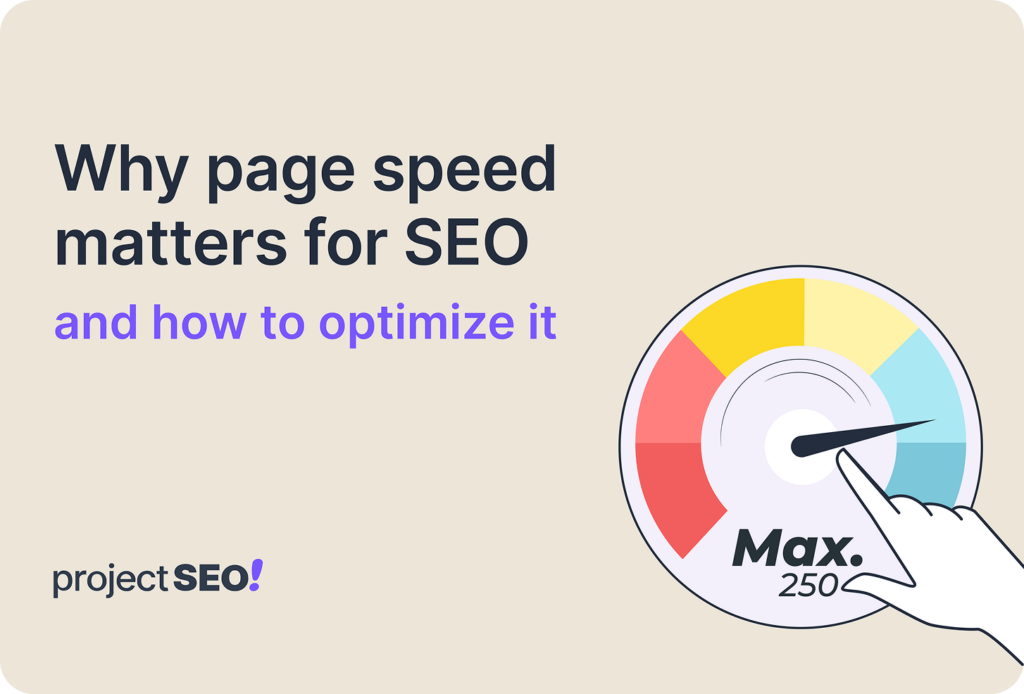Organic visibility driven through SEO is a proven way to accelerate business growth: Appearing in search engine results often will improve credibility and build audience trust.
But how did we come to this conclusion?
Well, it’s simple: About 75% of marketers feel their SEO strategies are ‘extremely effective’ or ‘very effective’ in achieving their marketing goals (HubSpot State of Inbound). Also, the first five organic search results account for 67.6% of all clicks, and about 62% of B2B buyers agree that searching online was one of the first things they did to learn about solutions to their pain points.
So, it is safe to say that Search engine optimization (SEO) remains one of the best strategies for customer acquisition. It is a single, highly efficient means of enhancing brand visibility and guiding new visitors to a business website.
The question now is, how do you make the most of SEO to achieve your B2B marketing and sales goals? Let’s explore some critical B2B SEO strategies and best practices to accelerate growth in 2024 and beyond.
What is B2B SEO All About, and How Does it Differ From B2C SEO?

B2B (business-to-business) SEO strategy is geared towards drawing other businesses to your brand, not direct consumers. This is different from B2C (business-to-consumer) SEO, which focuses on optimizing a business’s organic search visibility to attract consumers to a brand rather than businesses.
In other words, the major difference between B2B and B2C SEO is the audience, and B2B SEO can be quite challenging compared to B2C. The reason for this complexity is that in B2B, your target isn’t a broad demographic like “breastfeeding moms” or “people with diabetes.” Instead, you’re focusing on a specific group of decision-makers at companies, such as project managers, CEOs, or small businesses seeking new solutions to boost productivity.
Here are other notable differences between B2B and B2C SEO:
Sales Funnel Complexity
The B2B sales funnel is more complex than that of B2C. It typically involves many more decision-makers, making the process longer.
To put things in perspective, imagine selling solar panels to a home user and a CRM system to a large company like Microsoft. It takes much more to sell to Microsoft, where multiple stakeholders are involved than to a family, where just one or two persons have the final say.
A B2C sales funnel is linear, with customers moving from one stage to the next over time. However, a B2B funnel is not linear: Customers move up and down the funnel over time.
Hence, B2B marketers must study, deeply understand, and show expertise to their audience than B2C marketers need to.
Keyword Volume
B2B companies target low-volume keywords specific to their business and buyer persona, while B2C targets high-volume keywords.
Here’s an example of a typical B2B vs B2C keyword:
- B2B Keyword: HR software for mid-sized companies
- B2C Keyword: Affordable fitness tracker
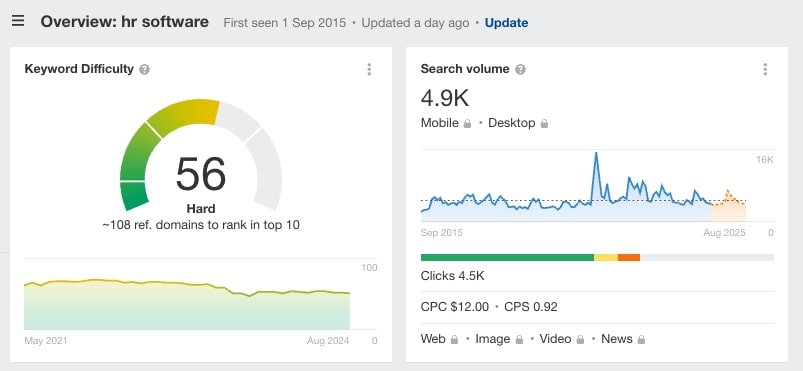

The pictures above show a much higher search volume for “Affordable fitness tracker” than “HR software for mid-sized companies.” However, lower search volumes don’t necessarily mean lower conversions and vice versa. B2B SEOs must find the right terms to target specific audiences and improve conversion rates.
Conversion Rate
B2B has a relatively lower conversion rate than B2C. This is because generating traffic in B2B SEO is one thing, but converting traffic into sales is another.
B2B customers are more likely to take longer to make decisions as more stakeholders are involved in the process than B2C. They are also generally more reluctant to take risks and may need more convincing to strike a deal.
That’s why, to succeed in B2B SEO, you need to attract traffic that matches your products or services and sell expertly and convincingly. You should be able to show your visitors that your product or service solves their problem. They should see the advantages of using your product and what they will miss out on should they walk away.
Content Style
B2B content is typically tactical in nature. Some examples include whitepapers, case studies, research reports, webinars, and in-depth articles. The sophisticated nature of B2B content is due to the fact that transactions involving two businesses often have longer sales cycles, as the buyer takes time to research and compare before making purchasing decisions. The aim of B2B content is primarily to establish authority and build trust over time.
This is unlike B2C’s emotionally driven, fun-filled blog posts, product descriptions, reviews, videos, and social media content that aim to capture attention quickly and encourage immediate action.
Steps for an Effective B2B SEO Strategy
The meaning and essence of search engine optimization have evolved over the years. These changes are driven by technological advancements, artificial intelligence, changing user behaviors, and algorithm updates – especially the September 2023 update that emphasized “helpful content.” Here are the top B2B SEO strategies to adopt in 2024 and beyond to ensure your business remains competitive and visible in the digital space.
Create Your Buyer Persona (Decision-Maker Persona)
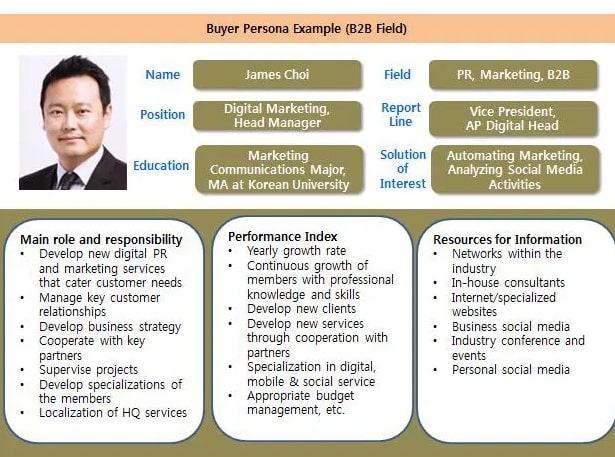
Building an effective SEO strategy for your business starts with understanding who your customers are and making decisions based on their needs and preferences. That’s why it’s crucial to create a buyer (user) persona as the very first step.
A buyer persona in a B2B scenario is a research-based profile representing your target customer (another business). It characterizes the target audience and depicts their wants, needs, and pain points.
To arrive at an ideal user persona, you should answer a few questions regarding their objectives, demographics, budget, and overall behavior.
- Objectives: Your user persona’s objective is, more or less, their search intent. Some questions to answer here are: What is my target audience searching for? What do they want to achieve? What are their pain points? What problems are they looking to solve?
- Demographics: The goal here is to understand the section of the general population that best represents your target audience. Some demographics to consider are sex, age, level of education, and income of a typical B2B audience.
- Income: What is the purchasing power of your target audience?
- Behavior: How does your audience connect with your business? What is their channel of communication or interaction with your brand? Do they engage your social media posts or simply visit your website?
With the information above, you can create profiles to direct your content and SEO efforts accordingly.
For instance, if you offer web development services, your user persona profile could be a small business owner who wants to increase online sales and improve website usability with a limited budget and little or no technical knowledge.
Another example could be a marketing manager in a mid-sized company who wants to develop a lead-generating website with marketing tool integration.
Understand Your Sales Funnel
A clear understanding of your sales funnel helps you create and optimize content for each stage of the buyer’s journey. Most sales funnels have three stages: awareness, consideration, and decision.
Depending on a potential client’s position in the funnel, determine what information they need and how they prefer to receive it—whether blog posts, webinars, or email campaigns. These insights will guide your keyword research, content marketing, and choice of channels.
To make things easier, you can talk to your sales team and have them explain the funnel, how it works, and the most critical touchpoints.
You also need to understand the customer lifetime value, average customer retention, average time to purchase, and why customers leave. Then, you can dig deep into your sales and marketing data to determine how (or whether) customers find your business online.
Conduct Technical SEO Audit

Before adding new content, a technical SEO audit to fix existing issues and identify areas needing attention is essential. Some important steps to achieve this include
- Checking for 404 Errors: Broken links can increase bounce rates, and Google could demote your website when people leave upon visiting. Tools like Google Search Console can help you identify and fix broken links to improve user experience and SEO scores.
- Auditing Sitemaps: Ensure your XML sitemap is correctly structured and submitted to search engines. An XML sitemap helps Google understand your website and tells the search engine where each webpage is for crawling.
- Checking for HTTPS: Secure your site with HTTPS to protect data and build trust.
- Internal Linking: Internal links help Google algorithms determine the relevance of a page. The more you link up your web pages, the more your content is deemed valuable and the more your visibility.
- Toxic Backlink Audit: Identify and disavow toxic backlinks that could harm your site’s ranking.
- Tracking Analytics: Set up and monitor analytics tools to track performance and identify areas for improvement.
Carry out Keyword Research and Competitor Analysis
Having created your buyer persona, understood your sales funnel, and conducted your technical SEO audit, it is time for content creation. But before that, you must figure out the following:
- Who are your competitors, and what are they doing to stay at the top?
- What’s the nature of your target audience’s queries?
That’s where keyword research and competitor analysis become necessary. These two activities will go a long way in shaping your B2B SEO and content marketing strategy. Knowing your competitors is a basic advantage to outperform them. Understanding your target audience’s queries through keyword research will help you match their problems with EXACT solutions. Tools like SEMrush, Ahrefs, and Surfer SEO can be instrumental in your keyword research and competitor analysis.
Create a Keyword Strategy for Each of Your Sales Funnel Stage
It is one thing to conduct keyword research but a different thing altogether to make your keywords work for you. Think of keywords as the signposts on a busy highway and potential customers as drivers searching for their destination. Well-chosen keywords guide these drivers to your business, directing them straight to the services and information they need, like clear signposts that lead travelers to their desired stops.
But here is the tricky part: keywords used without direction can become “a weapon fashioned against” your SEO efforts. That’s where topic clusters come in: They allow you to target keywords effectively, showcase your expertise, and dominate the SERPs for entire topics rather than just keywords. Developing a keyword strategy based on topic clusters also means you can scale your content and target prospects at every stage of their buying cycle.
Topic clusters typically have a central pillar page that covers a broad topic and links to cluster pages, which delve into specific aspects of the topic and link back to the pillar page. This SEO strategy allows you to create a web of content based on the results of your keyword and user research. It also allows you to use long-tail keywords that are relevant to your prospects more naturally. This further increases your chances of converting those prospects into customers.
Develop and Optimize Product or Service Landing Pages
SEO is not the only marketing strategy for generating leads. Email marketing and ads from Google, Bing, YouTube, Facebook, Instagram, Twitter, or similar places on the web can also be sources of lead generation. A landing page is a standalone web page where a visitor “lands” after clicking on an email, Facebook, or Twitter link.
If you don’t have a landing page at this point, you need to create one. And if you already have one, you must make it count by optimizing it based on current SEO best practices.
Abiding by the current best practices starts with creating or optimizing your landing pages with helpfulness and relevance in mind. Keep the content on your landing page focused and relevant to what your visitors are looking for, and guide them through the page with headlines and subheadings. Your landing page is also an opportunity to highlight the benefits of your offer rather than just the features.
Other tips to make the most of your landing pages include,
- Design a strong, clear CTA
- Optimize your layout and user experience
- Leverage social proof
- Make irresistible offers,
- Optimize your page speed to reduce loading time.
Capitalize on Link-building Opportunities
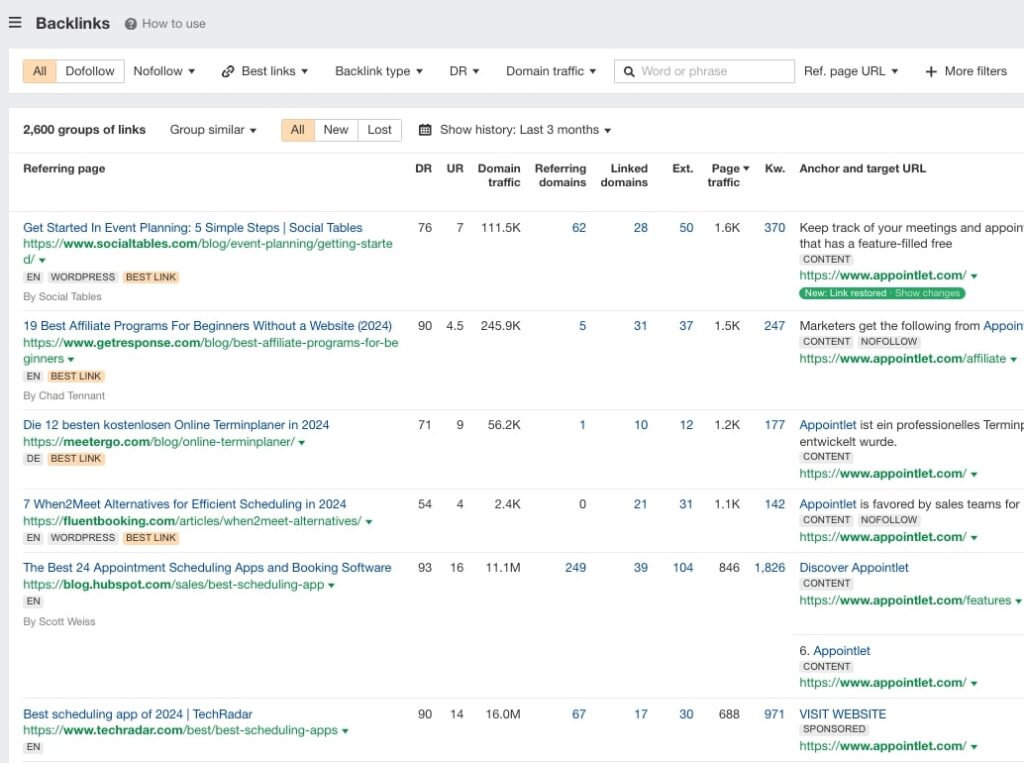
Backlinks have always been crucial to SEO success, but they will be even more so in 2024. However, recent Google algorithm updates have placed more emphasis on backlink quality. Search engines like Google view these links as an indicator of trustworthiness. Hence, high-quality backlinks from authoritative sites can boost your site’s domain authority, increasing its chances of ranking higher in the SERPs.
Some strategies to capitalize on B2B link-building opportunities include,
- Guest Posting: Write articles for industry-relevant blogs and websites to earn backlinks.
- Digital PR: Promote your content by reaching out to related businesses to link back to your website. You can achieve this by suggesting your blog post as a link for relevant resource pages or encouraging a journalist to write an article about your latest study.
- Content Partnerships: Partner with other businesses to create co-branded content that can be shared across both audiences.
Develop Your First B2B SEO Strategy Today
Ready to grow your business with proven B2B SEO strategies? ProjectSEO will help you implement result-oriented SEO solutions that drive traffic, boost conversions, and maximize your online presence. Contact us today to get started!
